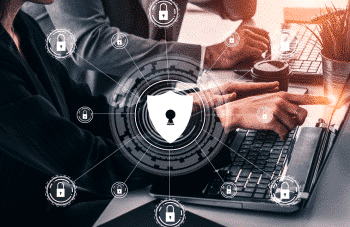
Electronic signatures for dummies (and everyone else): how do they work ?
If you’ve never signed a document electronically and you don’t know what an electronic signature is exactly, or how it works, or if you think that an electronic signature involves scanning your own handwritten signature, then this article is for you. We will give you specific and practical information about electronic signatures, which are already widely used by a large number of companies and are an essential solution for the future. As a certified Trust Service Provider (TSP), in accordance with the European eIDAS regulation, our trust services, including electronic signatures, are guaranteed to be secure, fair and compliant. We hope that this article will provide you with useful information and maybe even convert you!
First of all, you should know that as a long-standing player on the trust services market, we can assure you that an electronic signature has never entailed, and never will entail, scanning your own handwritten signature! But on a serious note, the electronic signature process is closely regulated by a legal framework whose purpose is to protect all parties involved, whether they be private individuals or companies.
What kinds of documents can I sign electronically?
Electronic signatures can be used on any kind of document that can be signed by hand. For example:
- Tenancy, sale or work contracts;
- Quotes;
- Delivery notes.
It’s important to note that a PDF format is the only standard recognised in Europe and must contain the signature elements directly in the file itself, rather than in a separate signature file.
How does the electronic signature process work?
When you sign a document electronically, you will either receive a link by email or be able to click on a hyperlink, allowing you to access the signature page where you can see the document(s) in question.
Then the next stage is confirming your consent (“informed consent”), where the TSP makes sure that you’ve fully understood the content of the document you’re signing. Consent is given and formalised by ticking a box. You will then need to authenticate yourself using a code sent by text message. These stages are essential to the authentication process.
Once the electronic signature process has been completed and all parties have signed, you will then receive your documents by email or in your customer space.
What devices do I need to sign a document electronically?
All you need to sign a document electronically is a computer, a smartphone or a tablet, as well as a standard internet connection. You don’t need any kind of software, card reader or USB stick. The process is carried out entirely online.
What guarantees to electronic signatures provide?
An electronic signature has the same legal value as a handwritten signature and allows you to prove:
- The integrity of the signed document, or in other words, a guarantee that the content has not been modified;
- The signatory’s identification, proving that they are indeed who they say they are.
How do I choose the right electronic signature solution for me?
Before signing a document electronically, make sure that the services offered by the TSP comply with the European eIDAS regulation and that their electronic signature solution includes a certified timestamp (link to timestamp article).
Finally, you should also make sure that the proposed solution is well-designed, user-friendly and effective (availability and reliability).
What are you waiting for?
Latest articles


Professionals, secure your company documents with our electronic seal
Read more...
